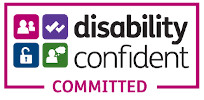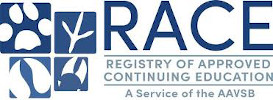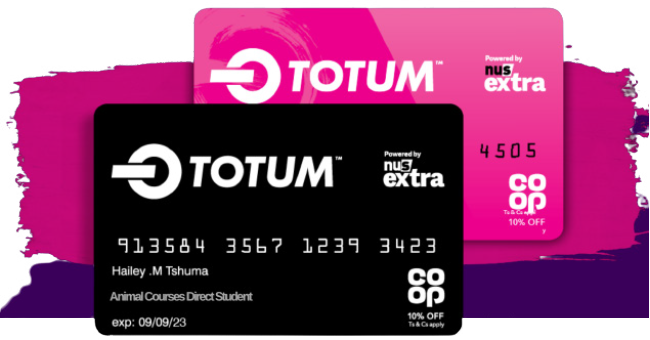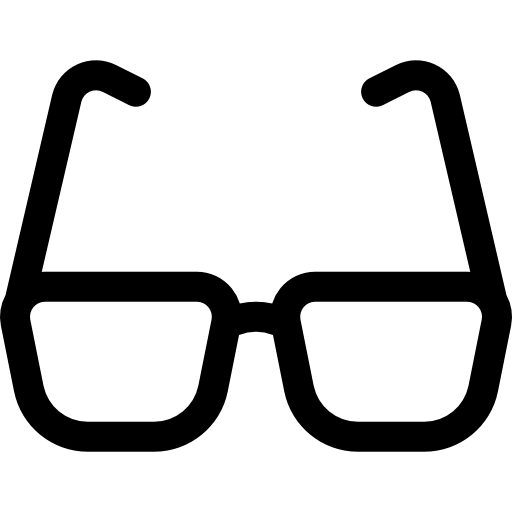Animals in many ways are similar to us humans. They can be happy, sad, agitated or excitable, and just like us, they can experience various issues with their health that can affect these moods and feelings throughout their lives.
As a nation of animal lovers, it’s no wonder pet owners will do whatever it takes to make sure their companion animals feel their best. After all, they are a part of the family! However, getting to the route of their health issues isn’t quite as easy as it is for humans, since they can’t exactly tell us how they are feeling.
Thankfully, animal therapies and treatments, like human healthcare services, have come a long way. Now, numerous treatment methods can help boost animal health and wellbeing, so they can live longer, more comfortable, and happier lives by our side.
Two such treatments are small animal hydrotherapy and veterinary physiotherapy, which are now commonly adopted to aid and prevent a host of animal ailments. Separately, they are hugely beneficial, but when combined, these complementary animal therapies can hit health problems from all angles to resolve issues and provide relief more effectively.
If you’re interested in a career in animal health, find out more about these treatments and how you can get qualified for both through an online course.
What is Animal Hydrotherapy?
You, like many others, may still be unfamiliar with the concept of water-based therapy for animals. However, it’s a hugely popular way to treat animals since it’s a way to exercise them with minimal impact.
If you’ve wondered ‘What is hydrotherapy for animals?’, it's essentially exercise that takes place in water, to get animals moving but causing as little pain and discomfort as possible. More technically, these exercises can take place on machinery like underwater treadmills or make use of spas for non-exercise-based therapies.
The use of water makes it an ideal environment to rehabilitate animals and ease their pain. Being buoyant helps the animal move without putting weight on its joints and muscles, which can encourage more mobility than they may normally be able to manage. As such, small animal hydrotherapy has been proven to help animals return to their normal function quicker than other animal therapies.
What Animal Conditions Can Hydrotherapy Help Cure?
Small animal hydrotherapy is typically recommended to treat chronic conditions, to prepare animals for or help them recover from surgery, and as a low impact way to maintain their fitness and weight.
More specifically, some of the conditions small animal hydrotherapy can help cure or alleviate are:
- Cruciate ligament issues
- Hip dysplasia
- Obesity and weight control
- Osteochondritis Dissecans (OCD)
- Post-operative muscle regeneration and care
- Spinal injuries and paralysis
- Sprains and breaks
Small animal hydrotherapy can also:
- Increase motion range in joints
- Relieve pain, stiffness and swelling
- Improve circulation
- Increase tissue healing
- Maintain and strengthen muscles
- Alleviate muscle spasm
- Improve cardiovascular fitness
- Increase speed of recovery

How to Become an Animal Hydrotherapist, UK Learners?
If you’re pondering the question ‘How do I train to be an Animal Hydrotherapist?’, the answer isn’t exactly clear cut.
With no set entry requirements, there are different ways you can get onto the Animal Hydrotherapist career pathway. Companies advertising Animal Hydrotherapist job vacancies will set their own entry requirements, some animal hydrotherapy centres even offer on the job training. This is ideal for qualified Hydrotherapists who want to angle their career towards working with animals, or those who are ok with starting at the bottom as a Trainee Animal Hydrotherapist and working their way up.
Though, applicants with relevant experience and qualifications will no doubt stand out against others applying for roles. Plus, they help you move straight into a qualified Animal Hydrotherapist position. Not only that, but now the animal hydrotherapy field is a professionally recognised area of complementary therapy, the standards of education are increasing. So, it’s wise to get animal hydrotherapy qualifications.
What is Veterinary Physiotherapy?
Another animal therapy that is unfamiliar to most people is veterinary physiotherapy, leaving many people wondering ‘What is a Veterinary Physiotherapist and what do they do?’
In short, instead of completing low impact, non or relatively low weight-bearing exercises in water, like small animal hydrotherapy, animal physiotherapy combines massage and weight-bearing exercises to improve animal health and wellbeing.
A Veterinary Physiotherapist completes a functional assessment of their animal patient following a veterinary referral. The physiotherapy treatment can then take place alongside veterinary care to help treat or manage health issues in animals long-term.
Due to its proven positive results, veterinary physiotherapy is more commonly being used in the veterinary care space. Now, animals can undergo a variety of veterinary physiotherapy treatments like:
- Manual techniques
- Electrotherapies
- Exercise therapy
Why Use a Veterinary Physiotherapist?
Like small animal hydrotherapy, there are a vast number of health concerns veterinary physiotherapy can aid and help the animal overcome, including musculoskeletal or neurological injuries and conditions.
Animals can be referred to a Veterinary Physiotherapist for:
- Back pain
- Fractures
- Improving biomechanics and athletic ability
- Post-surgery recovery
- Sporting injuries
- Sprains
- Strains
Overall, veterinary physiotherapy aims to assist in rehabilitating the animal, reduce pain, increase mobility, reinstate normal muscle control and function. Another popular use for animal physiotherapy is enhancing the performance of animal athletes or working animals while minimising injury risk.
How to Become a Veterinary Physiotherapist, UK Learners?
If you’re interested in finding out how to become an Animal Physiotherapist, you can work your way into veterinary physiotherapy jobs in numerous ways. This depends on your existing qualifications, experience and the professional body you aspire to join.
Your options are:
- Study a degree in veterinary physiotherapy
- Study a human physiotherapy degree then complete postgraduate training in veterinary physiotherapy
- Complete a postgraduate-level Advanced Certificate in Veterinary Physiotherapy
- Complete a Level 6 in Veterinary Physiotherapy, without attending university
What’s the Benefit of Animal Hydrotherapy and Veterinary Physiotherapy Together?
Small animal hydrotherapy and veterinary physiotherapy are highly beneficial animal therapies in their own right, but there are many benefits to completing these treatments in conjunction with one another.
Taking a multi-pronged approach by combining water and land-based therapies can provide a more holistic way to treat orthopaedic and neurological conditions, strengthen muscles and aid animals in recovery following surgery.
If you get qualified in both areas, you can provide a more rounded service and support animals in numerous stages of their treatment.
Where Can I Study Animal Hydrotherapy & Veterinary Physiotherapy Courses Combined?
Animal Courses Direct provide a range of industry-recognised and accredited courses in small animal hydrotherapy and veterinary physiotherapy with hydrotherapy. These courses are all studied online, but they also contain practical elements so you can have your learning assessed by experts in the field and gain vital hands-on experience.
If you want to take advantage of the career opportunities that are on offer to a specialist with skills in both areas, you can study both types of animal therapy together. In this case, our online Level 3 Diploma in Small Animal Hydrotherapy + The Level 6 Diploma in Veterinary Physiotherapy with Hydrotherapy – Part 1, 2 and 3 is ideal.
This is because to complete the animal veterinary physiotherapy training, you need to have the Level 3 Diploma in Small Animal Hydrotherapy. As such, this course is perfect for learners embarking on this career path who don’t yet have any of the required qualifications.
Separated into three stages, it breaks down your education into more manageable chunks, so you can juggle your learning more easily around your schedule. It also means you can commit to the first instalment of the course fees initially, then move on to the next phase of your course when you’re ready.
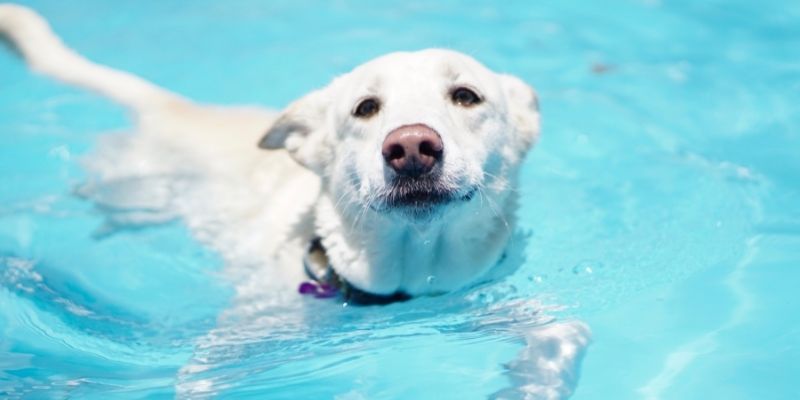
What Does the Level 3 Diploma in Small Animal Hydrotherapy & Level 6 Diploma in Veterinary Physiotherapy with Hydrotherapy Entail?
This online course combines two separate animal therapy qualifications in one.
These are:
- Level 3 Diploma in Small Animal Hydrotherapy – Ofqual Code (603/4410/6)
- Level 6 Diploma in Veterinary Physiotherapy with Hydrotherapy Part 1, 2 and 3 – Ofqual Code (603/7725/2)
The first phase covers the breadth of knowledge required to be a successful and confident Small Animal Hydrotherapist, as well as the introductory topics in veterinary physiotherapy. You will then progress onto more advanced hydrotherapy and physiotherapy topics in Parts 2 and 3 of the course.
Level 3 Diploma in Small Animal Hydrotherapy
In this section of the course, you will explore hydrotherapy techniques and the necessary assessments that must be completed ahead of treatment taking place. You will also learn about medical conditions and how they affect hydrotherapy treatment.
The theoretical elements of the course are completed online, in which you will gain an essential understanding of tissue healing, small animal behaviour, professional practice management and other areas required for competent practice. You will then move on to practical training which allows you to put your knowledge to the test and be assessed by a team of professional Vets, Physiotherapists and Hydrotherapists.
Keep reading for a more detailed breakdown of the small animal hydrotherapy component of this course.
Theory
Study the academic side of small animal hydrotherapy comfortably from home, or wherever suits. You will kick-start your learning with modules covering:
- Principles of animal hydrotherapy and treadmill therapy
- Health conditions animal hydrotherapy can benefit
- Animal first aid and handling small animal emergencies
- Small animal behaviour
- Guidance on treatment outcomes and patient suitability
- Small animal anatomy and biology
- Fundamentals of administering hydrotherapy
- Managing aftercare for animals, and more!
Practical
Complete intensive practical training at Woozelbears, an established canine hydrotherapy company boasting top of the range animal hydrotherapy equipment. During your hands-on sessions, you will get the chance to work with a variety of dogs, practice your learning and gain tips and industry insight from experienced professionals in the industry.
During your training, you will:
- Work with dogs with varying mobility
- Practice handling dogs at their level by kneeling during the session
- Get used to positioning yourself around dogs to accommodate their body language and behaviour
- Practice working in the confinement of an aquatic treadmill
- Get the opportunity to work in above-ground pools and experience walking through a 1-metre water level under the resistance and hydrostatic pressure of a heated hydrotherapy pool
- Practice advanced treadmill techniques
Level 6 Diploma in Veterinary Physiotherapy with Hydrotherapy – Part 1, 2 and 3
In the next phase of your combined course, you will begin your exploration of veterinary physiotherapy techniques with hydrotherapy.
.jpg)
Part 1 of this phase covers the introduction to animal veterinary physiotherapy, with Parts 2 and 3 moving onto advanced modules and training. Again, this section of the course combines both online study with practical experience sessions.
Theory
This part of the course aims to advance your understanding of small animal hydrotherapy. In addition to covering the common orthopaedic conditions suited to physiotherapy treatment, the roles and responsibilities of a Veterinary Physiotherapist as well as the range of veterinary physiotherapy equipment required.
Among the online modules, you will study the importance of clinical reasoning of land-based manual exercise. You will also look at the hazards and contraindications of basic land-based therapy and the need for integration and transition to water-based therapy.
In the more advanced phases of the course, you will examine modules on neuro physiotherapy, understanding pain, physiotherapy techniques, professional skill, exercise prescription and rehabilitation.
For a full breakdown of the modules covered in this combined course, view the course page on our website.
Practical
During your hands-on training, you will work in small groups across a number of clinical spaces. You will work with a combination of live clients and practitioner animals in order to develop your skills in numerous areas. These sessions also allow for reflective learning and larger group workshops.
You will gain an insight into the day-to-day aspects of running a busy practice, plus the lessons provided in practical sessions can be adapted to better suit your learning style.
How Old Do I Have to Be to Study this Combined Course?
You need to be at least 18 years old to enrol on our Level 3 Diploma in Small Animal Hydrotherapy & Level 6 Diploma in Veterinary Physiotherapy with Hydrotherapy combined course.
What Are the Entry Requirements?
You don’t need any prior qualifications or experience to enrol, as this course provides you with everything you need to qualify. However, you need to have a good understanding of the English language, be relatively fit and have sufficient physical mobility, and you must be a confident swimmer.
You also must have the capacity to attend 25 days of practical training and assessment (at one of our centres), in addition to completing 800 hours of physiotherapy clinical practice, plus 6 days of hydrotherapy training and assessment. Please note, there is a range of practical dates available to choose from to make this more convenient for you.
How Will I Be Assessed?
During your course, a portfolio of evidence and practical assessments will be used to assess your understanding.
How Long Does the Course Take to Complete?
Your enrolment is valid for 4 years, so you have up to 4 years to complete your modules and practical training. However, should you have the capacity, you can complete this course much sooner.
Is this Course Accredited?
Yes! The Level 3 Diploma in Small Animal Hydrotherapy meets the membership criteria for joining the Canine Hydrotherapy Association (CHA) as well as the International Association of Animal Therapists (IAAT).
Completion of Level 6 Diploma in Veterinary Physiotherapy with Hydrotherapy – Part 1, 2 and 3 allows you to join membership organisations like the Register of Animal Musculoskeletal Practitioners (RAMP), and register with them as a Veterinary Physiotherapist for small animals.
What Can I Do After Completing the Full Combined Qualification?
Once you have successfully completed the Level 3 Diploma in Small Animal Hydrotherapy & Level 6 Diploma in Veterinary Physiotherapy with Hydrotherapy combined course, you can pursue employment as a joint Animal Hydrotherapist and Physiotherapist.
Animal healthcare-related companies up and down the country are searching for professionals with expertise in these areas, and having both makes you all the more desirable for combined or individual Small Animal Hydrotherapist and Veterinary Physiotherapist positions.
Woozelbears Hydrotherapy – where you complete some of your practical training - offer franchise opportunities in various parts of the UK. Should you have the ambition to own your own business, this can be the perfect segue into a career as a self-employed animal hydrotherapy and physiotherapy professional.
You could also work as a Veterinary Physiotherapist alongside other veterinary professionals or pursue equine veterinary physiotherapy jobs that focus on racing and other sporting disciplines.
Outside of this, there is ample opportunity to set up your own animal care business working with horses, dogs and other small animals.
Study Animal Hydrotherapy and Physiotherapy Online!
With Animal Courses Direct, you can get everything you need to work as a joint animal hydrotherapy and veterinary physiotherapy professional in one place. Plus, you can gain the majority of your qualifications from home!
This allows anyone juggling childcare, existing work or other commitments, to complete their studies comfortably alongside them.
Find out more about how this course can kick-start your animal care career and the other benefits of studying it online with Animal Courses Direct by contacting our student support team today. Call them now on 01202 006 040, contact us online or click below to view the course in more detail!
Also, if you adore animals, you can keep track of all upcoming animal awareness days and events with our FREE calendar! Download it here.





